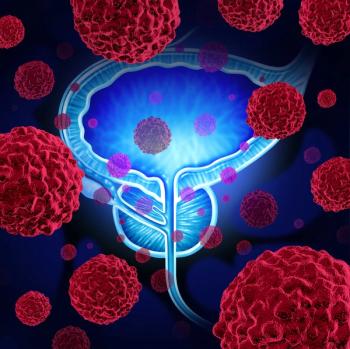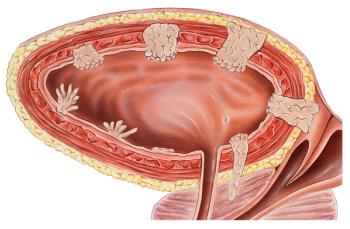
AR-V7 Did Not Confer Chemotherapy Resistance in Prostate Cancer Study
A small study found that the detection of AR-V7 in advanced prostate cancer patients is not associated with resistance to initial chemotherapy.
The detection of androgen receptor splice variant 7 (AR-V7) in advanced prostate cancer patients is not associated with resistance to initial chemotherapy, according to the results of a small study.
The trial included 37 prostate cancer patients from Johns Hopkins Sidney Kimmel Comprehensive Cancer Center and James Buchanan Brady Urological Institute. The results showed that the response to taxane chemotherapy in men with AR-V7–positive metastatic castration-resistant prostate cancer (CRPC) was on par with patients who are AR-V7–negative. These results were
Prior studies from the same authors showed that CRPC patients with detectable AR-V7–positive circulating tumor cells (CTCs) were more likely to have primary resistance to the first-line hormonal therapies enzalutamide and abiraterone. However, the tumors’ sensitivity to chemotherapy was not systematically studied.
Of the 37 patients treated with taxane chemotherapy, 46% (17 patients) had detectable AR-V7–positive CTCs. Prostate-specific antigen (PSA) responses were 41% and 65% in AR-V7–positive and AR-V7–negative patients, respectively (P = .19). PSA progression-free survival (PFS) was similar for both patient populations (hazard ratio [HR] = 1.7; P = .32), as was PFS (HR = 2.7; P = .11).
PSA responses were 41% among the taxane-treated patients compared with 0% in those treated with enzalutamide or abiraterone (P < .001). PSA PFS and PFS were both significantly longer among taxane-treated patients (HR = 0.19; P = .001 and HR = 0.21; P = .003, respectively).
The median PFS did not differ significantly according to AR-V7 status and was 4.5 months and 6.2 months in the AR-V7–positive and AR-V7–negative patients (P = .06).
Patients had a median age of 67 years and had a median of four prior hormonal therapies. Nineteen percent of patients had previously received docetaxel, and 95% had detectable bone metastasis. Baseline PSA levels were 126 ng/mL among the 37 patients.
AR-V7 status was significantly linked to treatment type (P = .002). The association was still significant when the model was adjusted for full-length AR levels, prior use of chemotherapy, and prior use of enzalutamide or abiraterone (P = .006). Men with AR-V7–positive disease had better clinical outcomes with docetaxel or cabazitaxel compared with either enzalutamide or abiraterone.
In men with AR-V7–negative disease, clinical outcomes were similar with both hormonal and cytotoxic therapies.
Predictive biomarkers that can identify subsets of patients who are more likely to respond to a specific therapy are still lacking, noted the study authors, but would greatly facilitate treatment selection and likely outcomes.
“AR-V7 could be the treatment-selection marker the field has long been waiting for,” said Emmanuel S. Antonarakis, MD, an oncologist at Johns Hopkins.
Of the nine patients who initially had undetectable levels of AR-V7, one patient was converted to AR-V7–positive status during treatment.
“The most surprising finding was that some patients who were AR-V7–positive at baseline converted to AR-V7–negative during the course of taxane chemotherapy,” said Antonarakis. Seven of twelve patients who had AR-V7–positive disease at study onset converted to AR-V7–negative status. “Whether these patients may regain sensitivity to abiraterone or enzalutamide is unknown, however.”
A large randomized phase II study of men with metastatic CRPC is now addressing whether AR-V7 status can be prospectively linked to resistance or sensitivity to AR therapies or cabazitaxel chemotherapy.
Newsletter
Stay up to date on recent advances in the multidisciplinary approach to cancer.
























































































